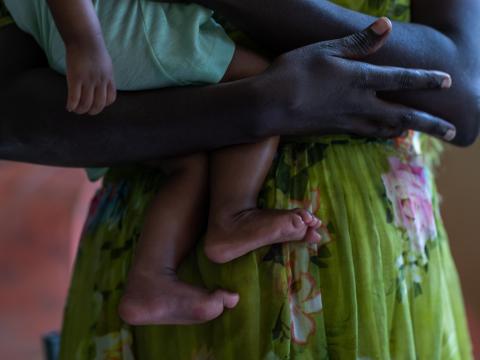Optimising maternal and child nutrition using a simulation-based approach
This is a summary of the following paper: Bowman A, Lutze S, Albright J et al (2025) Optimal allocation of antenatal and young child nutrition interventions: An individual-based global burden of disease calibrated microsimulation. BMC Global and Public Health, 3(1), 6 https://doi.org/10.1186/s44263-024-00120-y
Undernutrition remains a significant global issue, affecting millions and remaining a priority under the Sustainable Development Goals. Although many effective interventions exist, limited resources and the complex relationship between prevention and treatment make funding allocation challenging. Computer simulation studies can help by using models to understand how interventions work together and identify the most cost-effective packages to improve nutrition outcomes.
In this study, an individual-based microsimulation model was developed using data from the Global Burden of Disease 2021 study to evaluate a range of nutrition interventions. These included antenatal interventions (iron and folic acid (IFA) supplementation, multiple micronutrient supplementation (MMS), and balanced energy-protein supplementation) and child interventions (management of severe and moderate wasting and wasting prevention using small-quantity lipid-based nutrient supplements (SQ-LNS)). Additionally, an analytic approach was created to process the microsimulation results and identify the optimal funding allocation for interventions within a given budget. Ethiopia was used as a case study for this analysis.
The model estimated baseline annual spending of USD 47.1 million on maternal and child health interventions in Ethiopia, with allocations for IFA supplementation (USD 7.7 million), treatment for severe wasting (USD 20.1 million), and universal management of moderate wasting (USD 19.3 million). At this baseline, the model predicted 18.0 million disability-adjusted life years (DALYs) annually among pregnancies and children under five. Reallocation of the baseline budget to minimise DALYs resulted in funding antenatal MMS (rather than IFA supplementation) to maximum coverage and then investing the remaining budget in improving treatment coverage of severe wasting to 62.7%. This resulted in 592,000 fewer DALYs (an 8.3% reduction). Reallocating the budget to maximise child time spent not stunted, the model again recommended to first spend on maximising antenatal MMS coverage but then remaining funds were allocated to prevention of wasting through SQ-LNS. This resulted in 187,000 fewer DALYs (a 6.2% reduction).
To achieve maximum impact (saturation coverage of the most impactful interventions), a budget of USD 268 million (5.7 times the current spending) was required, resulting in 2.2 million DALYs averted annually. Full scale-up of moderate wasting management and SQ-LNS reduced the cost of maintaining severe wasting treatment saturation coverage by half. Sensitivity analysis confirmed that MMS, followed by severe wasting treatment and then targeted moderate wasting management were consistently prioritised in that order as the most impactful interventions.
The study's strengths include a robust modelling approach and comprehensive budget allocation analysis. Study limitations include uncertainty in intervention cost-effectiveness and varying priority of interventions under different budget scenarios. Future actions should focus on refining cost-effectiveness estimates, exploring intervention interactions, and expanding evidence from other settings to optimise resource allocation and intervention strategies for maternal and child health.
This simulation offers a new way to optimise health spending, showing that reallocating existing funds to key interventions can prevent 592,000 DALYs annually in Ethiopia.


